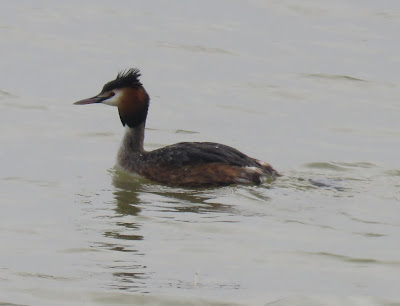Blackheaded Gull
|
Blue Tit
|
Brambling
|
Carrion Crow
|
Chaffinch
|
Collared Dove
|
Coot
|
Cormorant
|
Dunnock
|
Gadwall
|
Goldfinch
|
Great Crested Grebe
|
Great Spotted Woodpecker (H)
|
Great Tit
|
House Sparrow
|
Kestrel
|
Lesser Redpoll
|
Little Egret
|
Longtailed Tit
|
Mallard
|
Marsh Harrier
|
Moorhen
|
Mute Swan
|
Pheasant
|
Pied Wagtail
|
Pintail
|
Pochard
|
Redwing
|
Reed Bunting
|
Robin
|
Song Thrush
|
Starling
|
Teal
|
Tree Sparrow
|
Tufted Duck
|
Wigeon
|
Woodcock
|
Woodpigeon
|
Wren
|
It was good to see Tree Sparrow, Lesser Redpoll, Reed Bunting and Brambling from the Visitor Centre and a variety of waterfowl from the hides overlooking the flood plain.
David took some photos of the scenery!
| Tree Sparrows were in abundance around the Visitor Centre and Andy took a picture or two! |
 |
| Tree Sparrows |
 |
| Black headed Gull [winter plumage - just a dark spot behind eye] |
 |
| Great Crested Grebe |
 |
| Pair of Mallard |
 |
| Wigeon |
 |
| Pair of Tufted Duck |







No comments:
Post a Comment